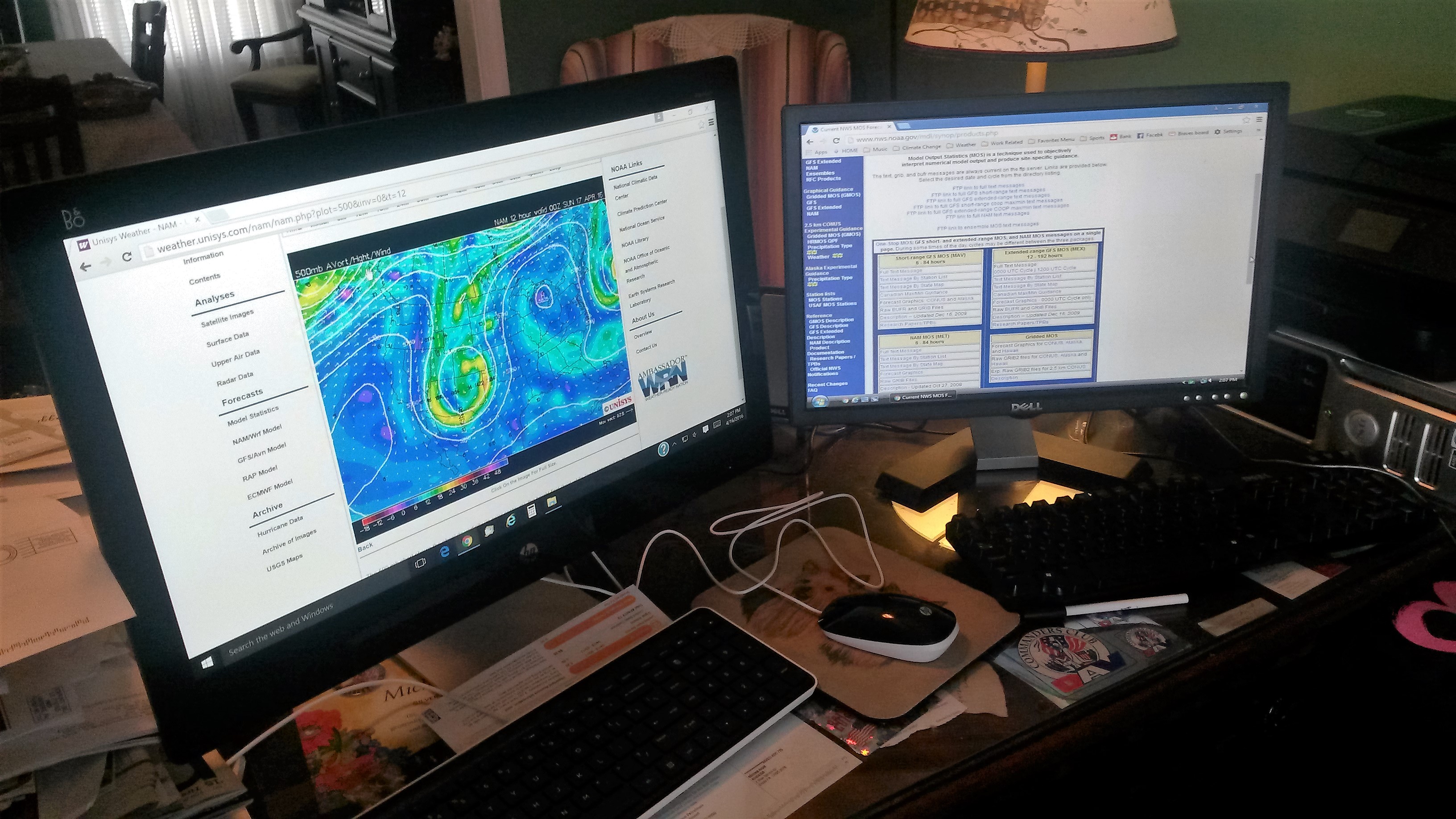Meteorology and Atmospheric Sciences Education
All credits were earned through the following:
- Traditional college courses (resident and distance learning)
- ACE approved transcripts for testing and technical education (resident and distance learning)
- Applied (hands-on) meteorology in the field or projects involving:
- Surface and upper air observations (balloons and meteorological rockets/rocketsondes)
- Middle and upper atmosphere/aeronomy research and analysis
- Meteorological support for research, development, test and evaluation (RDT&E)
- Weather forecasting and other meteorological research
- Integrated cooperative (co-op) learning.
“Applied Meteorology” involves extensive coursework in meteorology, physics, chemistry, and mathematics as well as direct experience in applying basic concepts to real world situations. Rapid technological changes emphasize the importance of Basic and Applied Research and its contribution to the success of our military forces. DOD Applied Meteorologists apply weather and climate information and other atmospheric research to the unique problems facing the military.
Advanced integrated research-based “Atmospheric Sciences” involves integrating advanced meteorology and atmospheric science coursework and hands-on experience with geophysical research while supporting and participating in research studies of the middle and upper atmosphere.Various DOD meteorological work assignments allowed me to gain a great amount of experience and knowledge as they were often associated with many colleges and universities not only in the local area but many were also contracted by DOD for further education, assistance in DOD research, and some were even doing their own research sponsored by government grants.
Courses taken include advanced mathematics (differential, integral, and multivariate calculus, applied mathematics and differential equations with linear and nonlinear analysis, analytical geometry, trigonometry, and probability and statistics for applied sciences), chemistry/atmospheric chemistry, physics/atmospheric physics, thermodynamics, cloud physics, atmospheric optics, atmospheric dynamics, atmospheric radiation, atmospheric electricity, atmospheric measurements, physical meteorology, fluid mechanics, geophysics, synoptic meteorology I/applied weather and forecasting lab, synoptic meteorology II/advanced applied weather analysis and forecasting lab, middle and upper atmosphere meteorology, dynamic meteorology, applied meteorology and climatology, applied environmental climatology, applied synoptic climatology, applied environmental and operational forecasting, mesoscale meteorology/severe weather forecasting, tropical meteorology, paleoclimatology, glacial/ice dynamics, micrometeorology/atmospheric boundary layer, atmospheric and ocean circulations, meteorological observation and instrumentation, surface and upper air observation and analysis, weather radars, applied meteorology for aviation including pilot and command weather briefings. ,
, 